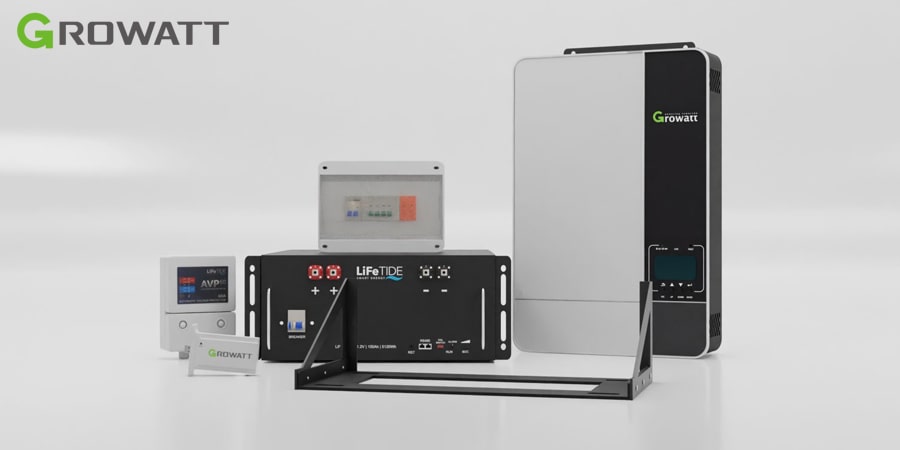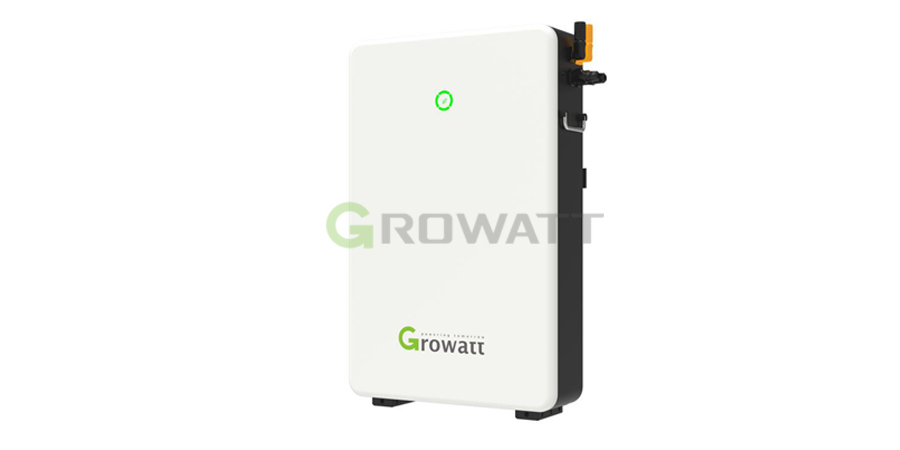You may have a question, how many batteries do I need to run a 1000 watt inverter? In this article, we are going to discuss the required number of batteries for inverters. As we know, solar inverters play an important role in the process of converting the direct current (DC) that has been generated by solar panels into alternating current (AC), which is suitable for household and commercial usage. By tradition, many solar power systems have combined batteries to the system in order to store the extra energy for later use. Choosing the best battery for a 1000w inverter depends on different factors.
Required number of batteries for 1000w inverters
We can determine the number of batteries needed for a desired runtime. If you want a one-hour runtime, for example, we divide the actual power consumption (1111 watts) by the battery capacity (83.33 amps) to get approximately 13.34 batteries. Since it’s not practical to have fractional batteries, we would round up to 14 batteries.
Note that these calculations mentioned above are based on a simplified scenario and may vary depending on specific factors like battery efficiency, temperature, and maintenance. It’s always recommended to consult with professionals and experts, or try referring to the manufacturer’s guidelines for more accurate information related to your specific situation.
It is necessary to choose high-quality batteries with high discharge rate to have optimal performance. If you connect more batteries, you can use the inverters longer, but it also needs high maintenance and cost. It depends on several factors to determine how many batteries are needed to power a 1000 watt inverter, such as: battery capacity, battery voltage, and discharge rate.
3 Important factors in determining required number of batteries for inverters
When we start to explore our options, and it comes down to determining the number of batteries needed for a 1000-watt inverter, several factors take part in this decision. The most important factors include:
- the battery capacity
- the inverter’s efficiency
- the desired runtime you are looking for.
Contact our sales experts to know Growatt on grid inverter and growatt hybrid inverter price.
1. Battery capacity
The first factor we are going to talk about is the battery’s capacity. In order to determine how many batteries are going to be needed, we must consider the battery capacity. Let’s say we have a 100 Ah battery. If we want to calculate the number of batteries, we are going to need the answer to dividing the total power consumption (which here are 1000 watts) by the battery voltage. If we accept that we have a 12-volt battery, the answer to the question is going to be 1000 watts divided by 12 volts, which gives us approximately 83.33 amps. This means that, for this case, we need at least 84 batteries.
| Duration at 1000W Load | Battery Size |
| 1 hour | 100ah |
| 5 hours | 500ah |
| 24 hours | 2000ah |
2. Batteries efficiency
The next aspect we are going to talk about is the concept of efficiency. It is important to mention that technically, it is not possible to have a complete efficiency rating, and solar Inverters are not 100% efficient. Let’s consider an efficiency rate of 90%.
In order to calculate the actual power consumption, we need to divide the total power consumption from the system by the inverter efficiency. In this case, 1000 watts is going to be divided by 90% (0.90), and it is going to give us approximately 1111 watts.
Contact our sales experts to purchase Growatt off grid inverters.
3. Runtime
The final main factor we are going to discuss is the desired runtime. To calculate it, you can follow the steps below:
- The first thing you need to do is determine the load you want in watts. For instance, if you have an 800-watt appliance, the load for the runtime is going to be 800W.
- After that, you need to find the battery capacity (in amp-hours or Ah) as well as the voltage (V) connected to the inverter. These factors are going to make sure of the amount of energy that is going to be provided to the solar inverter.
- Then, we are going to calculate the available energy with the unit of (Wh) from the battery and, after that, multiply the battery capacity (Ah) by the battery voltage (V).
- The next aspects to consider while calculating are depth of discharge (DoD) and efficiency. In the case of most batteries, you must know that they shouldn’t be fully discharged so that they can have the maximum lifespan possible.
- Keep in mind that the type of batteries is also important. In the next example, we are going to consider a lithium-ion battery, which is a popular one in the market.
Example
In this example, the chosen battery is a lithium-ion battery with 80% DoD and Wh by 0.8, and if you choose a lead acid, it is going to be 0.5.
The usual efficiency of a solar inverter is (typically around 85-90%).
For example, if you’re using a lithium-ion battery with a recommended DoD, multiply the available Wh by 0.8. For lead-acid, this is 0.5. Also, consider the inverter. Multiply the adjusted Wh by the efficiency factor (0.85 or 0.9).
Divide the battery’s available energy (Wh) by the energy consumption of the load (W) to find the runtime in hours.
I hope this guide has helped you determine the required number of batteries for inverters such as 1000-watt inverter. If you have any more questions or need further assistance about suitable inverter for 100ah battery, call us.
Be in touch with us to buy batteries for Growatt Inverter.




Am not understanding how many battery needed for 1kva
Dear Steve.
The Offgrid inverters below 5 kw are 24 V. Therefore, 2 units of 12 V gel or lead acid is enough.
Dear Steve,
Please share your inverter model number.